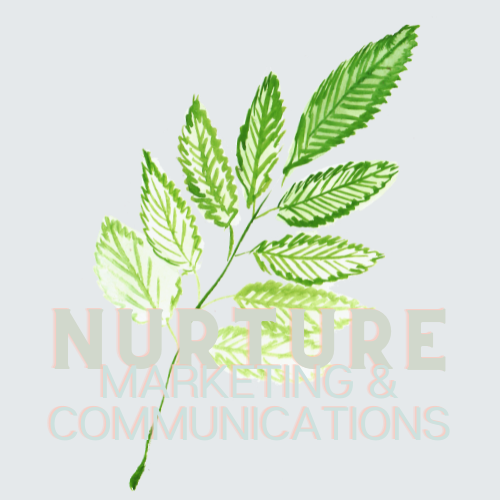It bears repeating: online marketing does NOT negate the traditional principles of marketing. Understanding your ideal buyer is the fundamental first step to properly positioning (and pricing, and selling) your products.
In other words, before you master Google Ads or schedule a year’s worth of Facebook and Instagram posts, you should know whose eyeballs you want to attract, and how to get them to buy.
Nurture Marketing Tip: Get out a legal pad and a pen. Developing buyer personas for each of your top customer segments is best performed as a low-tech exercise.
What is a Buyer Persona?
Think of a buyer persona as a composite sketch of some of your best customers. What makes them tick? What ticks them off? Why do they need your products or services? How do they find out about your products and services?
No matter what your business, the more you know about your customers, the better. Collecting sales data is easier than ever. But when you’re launching a new product or service, or simply don’t have much sales and marketing data to work with, you need to create the composite profile of your best customers. The good news is that you can do a very good job, fairly easily, when you take the time to thoughtfully consider what you know about your customers, your product(s), your competition, and the general market.
Complete the questions below as best you can, based on what you know about your customers. Note that there’s just one set of questions below, and only one buyer persona example.
This is a valuable exercise, regardless of the type of business you’re in. Consider how the example below could be helpful in marketing several different types of consumer products or services.
Ideally, you’ll repeat the exercise for different types of customers, e.g., fleet buyers, repeat buyers, referral buyers, etc. Any way you slice it, the resulting buyer profiles are useful in tailoring your marketing and sales messaging. Get started with the questions below!
Persona Development Lite
Think about your best customers – the customers you’d like to clone – and answer the following questions about them. This is, in large part, a psychological exercise, so give yourself permission to imagine these people in rich detail. It’s like creating imaginary friends, only better – you’re dreaming up your picture-perfect customers.
Now, picturing one of your favorite customers, complete these questions to the best of your ability:
- What industry or industries they work in?
- Describe their basic demographic make-up, include –
- Age
- Gender
- Education
- Geographic location
- Marital status
- Income
- Kids?
- Pets?
- Hobbies?
- What are their work days like?
- What is/are their work/career goals? (getting promoted? getting a different job?)
- Describe their most common complaints. < This is very important. Remember, people buy solutions to problems.
- Who are the people, places, and resources they rely on to help solve problems?
- How do they relax and have fun?
- What is/are their greatest source(s) of pride?
If you’re marketing consumer products or services, or selling a product with a clear advantage in a mature market, answering these questions will probably give you enough to get started.
If you’re selling to B2B customers, your product or the need it addresses is very new or has a long sales cycle, you’ll need to answer more questions to develop buyer personas. (We have those questions – contact us if you’d like a copy.)
But Wait, There’s More
You’re not done yet. Hang in there! Understanding your customers is vital to increasing sales and repeat business.
After answering the initial questions with a particular customer in mind, repeat the process for your top three customer types – or even more, if your product offerings or customer segments dictate.
Then, flesh out descriptions for each of those prospects or customers. Your goal is to make the descriptions sound like introductions to real, live people. Think of the persona as an in-depth dating profile or a report on a candidate after an initial job interview.*
And – this is important –
Your first buyer persona might look something like this:
Lacy Labradoodle-Owner is 36. She is a married (or divorced) middle-manager working outside the home, with a fairly long commute. She has at least two children in day care/elementary school and her parents live out of town or are engrossed in their careers. She’s busy! Time is more precious than money. Taking care of “everything” is hard, but she and her neighbors and friends try. They want to drive nice, clean, shiny cars to their kids’ weekend and evening activities. They follow a variety of influencers and humor channels on Instagram, YouTube, and TikTok, post ‘humble-brags’ about food, exercise, and their kids’ accomplishments. They’re also active on LinkedIn and while they’d really like to get promoted (or launch a lucrative consulting business) they’re also longing for a vacation. The family dog is part of the family, but sometimes Lacy resents the care and feeding it requires.
You can probably see the value in this exercise pretty clearly.
Whether you’re selling pet insurance services, a new dog food, or a cleaning product, a profile like this gives you great insight into how to appeal to Lacy, where to reach her, and you understand some of her problems and priorities. All of that helps you move her through the buying cycle effectively – and just as importantly, helps ensure your relationship with Lacy gets off to a solid start.

You don’t want to just make sales – you want customers for the long haul! Develop the right relationship with those customers and they’ll sell for you.
If you’re ready, go! And if you’d like some help, let us know. We can help you flesh out your buyer personas, or to develop marketing plans based on what you already know about them.
Buyer personas lay a lot of groundwork needed to craft quality content, social and other online advertising campaigns, as well as developing new products, from branding and pricing to product launches and promotions.
The Bottom Line on Developing Buyer Personas
Oodles of resources online describe the nuances of persona development. If the questions above don’t seem to fit your customer base or product – or your just aren’t feeling it – you might want to look at other questions. That said, beware of distracting yourself from the work at hand.
Different guides to persona development range from a basic worksheet at Usability.gov to a much more comprehensive template at Hubspot. Which method is best for you? The one you actually use!
The point of this exercise is to develop a deeper understanding of your customers based on assumptions. However well-informed those assumptions, you might feel a little uneasy about essentially “making up” a target customer base.
An outside viewpoint can help. If you’d like to work through this together, contact us.
*Obviously most of these questions aren’t allowed in a job interview!

